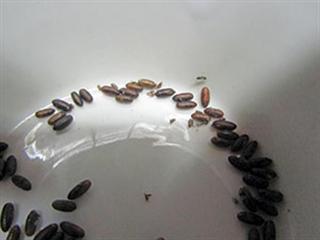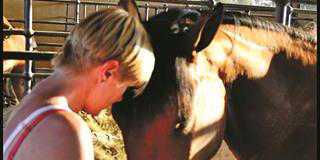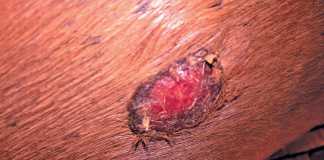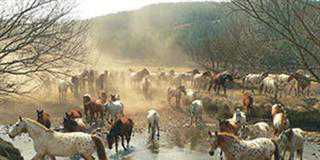
As this column has mentioned before, fly numbers in South Africa over the past eight months have been higher than ever before. Flies not only transmit diseases, but can torment horses to such an extent that they lose condition. Biting flies are also a real nuisance when one is riding. The horse is so busy swishing its tail, shaking its head and kicking at the flies that it struggles to concentrate on schooling. One way to control flies is by using parasitic wasps, which are available commercially.
Choose your wasp!
Most of us associate wasps with being stung painfully. But parasitic wasps are tiny – about the size of black ants – and sting only fly pupae. The scientific name of the parasitic wasp used in South Africa and elsewhere is Muscidiferax raptor.
House flies (Musca) and biting flies (Stomoxys) lay their eggs in damp, warm horse manure or soil. The eggs hatch into larvae and then pupate, before hatching as adult flies.
The female parasitic wasp seeks out fly pupae by crawling through the manure. When it locates a pupa, it stings it so that fluid escapes from the lava within. Male wasps drink the fluid and mate with female wasps, which are lured by the fluid. The female wasp then lays a single egg in each pupa. When it hatches, it kills the immature fly.
There are many advantages to using parasitic wasps:
- They are environ- mentally friendly and present no health risk to humans or farm animals, unlike the poisons usually used for fly control.
- They attack flies only. When the flies have gone, the wasp population decreases.
- They are generally available in nature, but don’t breed fast enough under natural conditions to make a significant difference to fly numbers. When commercially bred wasps are added, however, up to 90% of fly pupae can be parasitised.
- They are cost-effective and easy to use.
- Flies don’t adapt or become resistant to the wasps, so you can continue using wasps year after year.
- They can be used under various weather conditions – rain or warm weather make no difference to their efficacy. Spring and summer are the best time to start using wasps, as last year’s fly pupae have probably survived the winter and are on the point of hatching.
Parasitic wasps can be ordered on the internet from local suppliers. Once your order is received, parasitised fly pupae will be sent to you by post inside a cooler-box.
Usually you will be notified by SMS when the wasps are dispatched, and it’s important to collect them as soon as possible. The wasps will be on the point of hatching and will emerge if the temperature inside the cooler box rises above 12°C. How to use the pupae effectively Inside the box, you’ll find five perforated plastic bags each containing about 1 000 parasitised pupae, and a number of perforated plastic packets.
There are two ways to use the pupae:
- Sprinkle them lightly over manure heaps or other places where there is plenty of manure.
- Divide them into various perforated plastic bags and hang them up in the barn or individual stables if you’re using a deep litter system.
- It is a good idea to use the wasps as part of a fly control programme that includes fly traps, sticky fly paper or fly poisons painted on walls.
Finally, beware, of using the wasps on manure treated with insecticides; this will kill them.
Contact Dr Mac at [email protected]. Please state ‘Horse talk’ in the subject line of your email.













